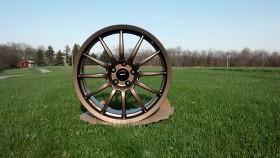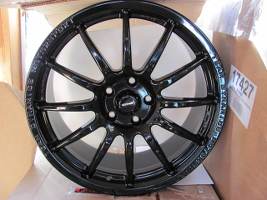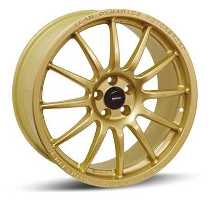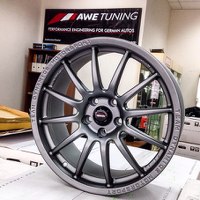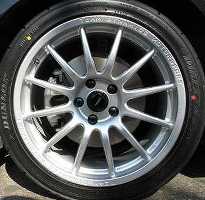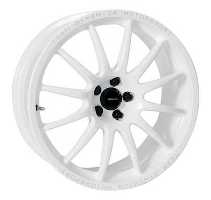I have bc coils lowered about 1" in the front with 16x7 40mm offset wheels and 205/50 tires and my tires rubs this in the fender well...
(Not my pic just using as example)
Mostly on hard bouncy cornering, road dips, bumps, potholes ect. And this is even after adding about 10mm preload and stiffening the damper to 21 from soft. I refuse to raise it because I love my stance so much. Im considering cutting some of that metal under the fender well to see if the tires clear on travel or buying new wheels with a higher offset and narrower tires. So beware when goin too low of an offset if lowering.
There is some context I would like to add to stuntdoogie's quoted post. Generally, coilovers do not install at stock height, but rather are 1" to 1.5" lower than stock to start out with. From there, the coilover can generally be lower an additional 1" to 1.5" from the stock coilover height. I make mention of this as enthusiasts new to the coilover world often do not know to take into account the OEM height and the coilover's highest "height" setting.
Now for some numbers. Taking the mildest coilover standard height out of the box being ~1" lower than the oem suspension height, other aspects of lowering come into play. stuntdoogie has lowered his front coilovers an additional ~1", which is the equivalent to ~ 2" drop from the stock suspension height. A 2" drop, in and of itself is a healthy drop for any street car. Now lets look at the tire size choice. stuntdoogie went with a smaller diameter wheel, 16x7, and a 205/50/16 tire which results in a + .61" taller than stock combination.
Now the math. With the coilover's initial setting of -1" + the additional -1" of lowering give us ~2" drop. Then the wheel/fender gap was reduced by and additional .61" with the taller tire. The equivalent for fitment purposes is a 2.61" drop (or decrease in clearance). Anything 2.5" is without a doubt a sizable drop. Sure, there are those that will push the limits and make all the adjustments to go lower, but this is a very small percentage of enthusiasts looking for a real stanced out appearance. If rolling fenders, pulling fenders, or adding negative camber (will result in uneven tire wear) bother you, as well as dodging bumps and scraping on graded driveway entrances, etc., then a major stanced drop is not in your future.
In stuntdoogie's case, he could raise his coilovers and dial out the rubbing. With his current wheel offset and tire size, it is the only option available. As he rightly noted, a change to a higher offset (moves the wheel inward away from the fender), and/or a different tire size (something with a lower overall height) will add up to a setup that works with the drop he likes.
As a seller of wheels, with the recent (past few years) expansion of coilovers in the marketplace, I have been presented with many fitment situations. The methodology I used above is a general primer for the suspension dropping enthusiast. There is a bit more finer detail to consider, for instance taking into consideration additional wheel width, that would affect tire size and wheel offset, and then there is tire stretch, in which a wider width wheel is fitted with a stock width tire, or narrower (achieves additional clearance when needed).
What appears to be challenging is really no more than a math word problem. As a parameter is changed, so does how the wheel/tire locate and clear with respect to the fender or the strut. There exists innumerable spec combinations, for various reasons, that can be understood by solving the word problem. The internet has the available resources, tire/wheel fitment calculators, to assist (although none are 100% accurate due to variances in tire structure, which varies among different manufacturers...one tire may end up having a wider tread patch as opposed to a crowning tread patch which is narrower....for the same size tire...which affects the reality of the fitment, or are car specific in terms of inset spec..the factory setting for distance of clearance from the trie to the strut).
Hopefully I didn't lose anyone. I was no different than anyone else years ago and had to get my head around how offsets, wheel diameter and width, tire size, drop, etc. are all related. In no way is this post meant to pass judgment, but merely to inform and help to have an understanding. In this day and age, the market place still overwhelmingly leaves you with no choice in offset other than what is provided, and many enthusiasts have to use this offset as their starting point.
I would be remiss not to mention Team Dynamics offers the widest range of orderable wheel sizes/offsets/and standard color options than any other wheel manufacturer, and the wheels are by far one of the best true values out there. There are more expensive wheels out there that are not as good. One wheel or a million and one wheels...Team Dynamics will fill you order. In the context of the discussion above, having control over your wheel offset opens up options and decreases sacrifices when only one offset is available.
![Like [like] [like]](/images/smilies/icon_smile_like.gif)



